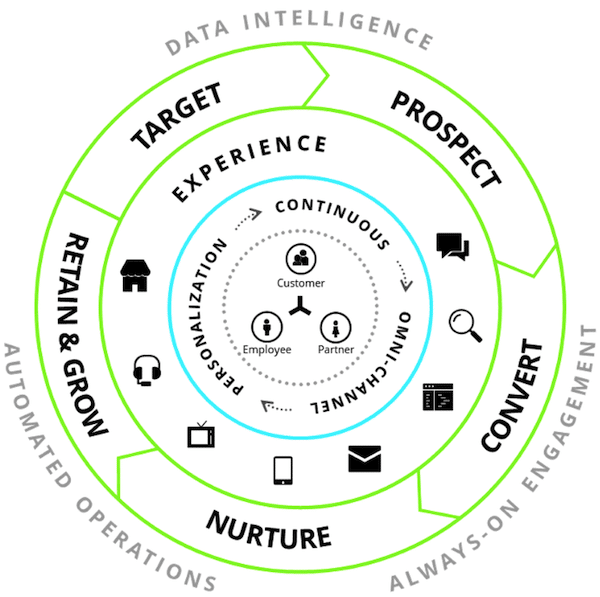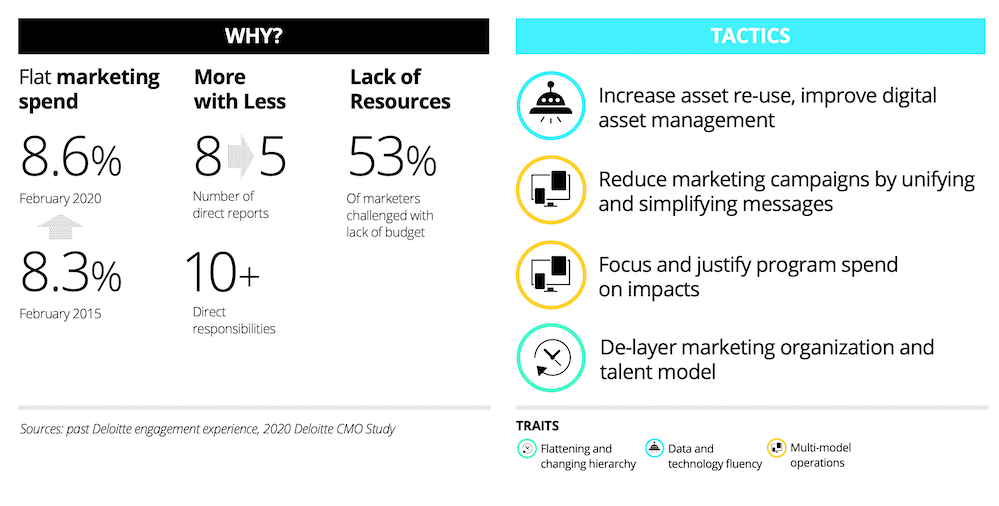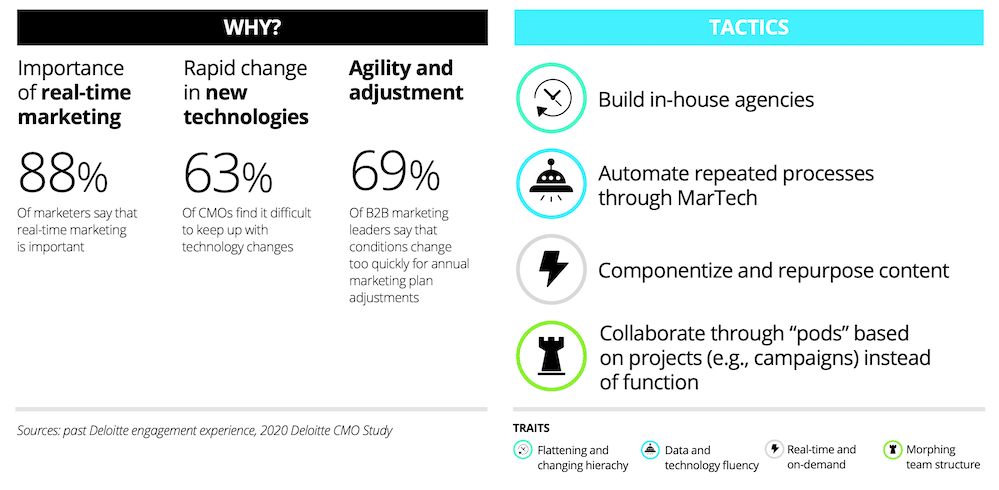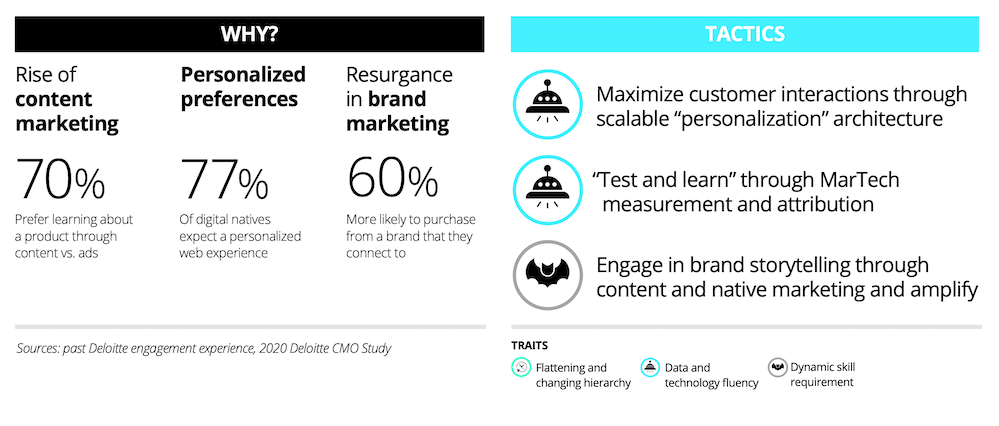AI autonomous hyper personalisation marketing is the practice of using predictive analytic capabilities to personalise customer relationships in real-time with content, recommendations, fulfilment, and even purchase follow-up for each consumer’s needs. It helps make the right decision in the moments that matter to keep customers for life. Gartner predicts this approach would drive more than half of all marketing messages this year.
The good news for retailers is that to harness the power of autonomous marketing, they don’t have to spend months or years building new capabilities and platforms from the ground up. Like many digital tools, autonomous marketing can benefit from as much or as little outside support as a retailer wishes to use: for help designing it, building it, running it, or a combination of the three. Some AI autonomous hyper-personalisation software solutions are so complete, that all the work is already done for you, and most accurately define the word, requiring zero human involvement at any time.
Retail consumers’ needs are changing. The details emerged in Deloitte’s retail survey, in which most respondents say at least half of their purchases are influenced by convenience, and the new patterns of interaction changing what convenience means to people.
AI Autonomous hyper-personalisation becoming ubiquitous
As in other parts of life, there is a “new norm” in shopping, and with it, new opportunities to make commerce personal. There’s no question retailers have already pivoted in response: Many have stepped up with offerings such as same-day delivery and the ability to buy online and pick up in-store.

But as these options become more common, the competitive advantage retailers derive from them depends more and more on how “sticky” they can make them so customers keep coming back. The value proposition of a service enhancement depends on a combination of factors, including price, quality, category depth and breadth, context and relevancy. Learning what works comes back to data and knowing the customer’s attitude.
Using the data to drive the message, the data should also identify the channel within which the customer will be most receptive. As you prepare your hyper-personalisation, it is important to develop a channel strategy in conjunction with the data-driven activities. Artificial intelligence and machine learning technology solutions can be the portals to consumer convenience, real-time product availability, channel preference, and the kind of responsiveness that fosters personalised service and relationships.
Retail marketers achieve hyper-personalisation by using decisioning engines that drive the right product at the right time, with the right content in the right message, based on data from customers, from the market, and from macro trends. The messages consumers, especially if it’s only ever the things that individual is personally interested in, determine where they land and how they interact with retailers and experience those interactions. All of which retailers can measure and fine-tune—and automation gives them more options they can execute more quickly and precisely.
And make no mistake, consumers are still consuming (but perhaps not with you): depending on scenarios, it is forecast that a retail season that either match last year’s or grows by as much as 3.5 per cent. The same forecast expects ecommerce to grow by 25 to 35 percent. This challenging period isn’t a body blow to marketing, but a new age in its history, and we are approaching a crossroads in the standard retail business model.
Will consumers return to physical stores and malls in large numbers? Will the nature of retailing evolve? Either way, brands are changing their products and services to meet customers where they are.
They need to change the way they manage their customer relationships for the same reasons.

Moments of uncertainty in the marketing funnel
Think about the ways a retailer allocates marketing spend and other efforts to get consumers into and through the marketing funnel. As public policymakers have put it, there are “known knowns” and “known unknowns” in the ways this discipline is changing.
It’s always been true that acquiring customers costs more than retaining ones you have, but now those acquisition costs are rising even more steeply. In addition, the cost of satisfying both new and existing customers is also rising in a way that can hurt margins—for example, because heightened expectations for convenience have led to curbside pickup and other costly fulfilment methods. To respond to these pressures, retailers need new thinking on how to find customers, and more effective and efficient ways to serve and retain them.
What remains to be determined is the right mix of techniques. If the marketing spend needs to
be restructured, what’s the new structure? Right now, investments are pivoting to a greater reliance on social media, on “siloed” (definition) environments, and on innovation. Because so much is in flux, it’s important to approach this change with a “test and learn” attitude. There are many new tools to try. Retailers who can more quickly learn which ones work for them and which don’t can adjust to what they learn, and if they preserve their agility, they can make their channel spending more effective.
Some of these realignments will take time to bear fruit, some will instantly blow your mind. Picking the right one to implement can be a difficult decision, that requires detailed consideration. However because of the nature of digital and AI, and because there are implementation options available to put some changes in place with minimal set-up.
Agile capability and autonomous AI hyper-personalisation
Autonomous and hyper-personalisation marketing combines real-time marketing—the ability to be there in the moments that matter for customers— with experience management concepts that pinpoint the customers who offer the most value and cement a retailer’s relationships with them for the long term.
Retailers who win on real-time customer experience do so by building effective systems to automate engagement. The key to that is not only to have data but also to use it—to link consumer identity data with all interactions and touchpoints so the retailer can present a consistent face and experience across channels.
In a commissioned study conducted by Forrester Consulting, companies had 17 different technology applications using customer data and an average of 28 different data sources for generating customer insights and customer engagement. Only one in four had an omnichannel campaign history and a record of using it effectively. Building on that foundation of data, automated machine learning uses advanced analytics and decision platforms that can make those customer interactions not only timely and consistent but also hyper-personalised and relevant.
More cost-effective: Do more with less
Companies can reduce marketing inefficiencies by simplifying processes and organisations:

Decisioning automation
Hyper personalisation like this, at the scale of a major retail operation, can’t rely on human interaction. It needs to be autonomous and respect and mimic human outreach. Almost two-thirds of consumers (62 %) feel they have a relationship with a brand, and more than half (56 %) want virtual experiences to feel more human. To be at the top of each customer’s buy list, a retailer needs to deliver the right message at the right time through the right channel. Multiply that by millions of potential customers, all of whom are hearing from competitors at the same time, all of whom are empowered to make purchasing decisions in an eye blink, and it’s clear this is a job for machines.
Autonomous tools apply detailed consumer intelligence that can address their needs by monitoring faster, more granular, and connected data and insights that answer cross-enterprise questions across customer behaviour regularly.
Think of this process in terms of three pillars: data, decisioning, and delivery. Personalised data drives the triggers for a retailer to take action. Lesser decisioning engines carry out segmentation, and advanced ones offer 1:1 hyper-personalisation with a much higher return to offer individual predictive behaviour. Machine-learning-driven data triggers, whether developed through data science, orchestration tools, or marketing orchestration tools, can automate decisioning for hyper-personalised delivery. Delivery uses new channels to keep consumers in a retailer’s digital environment, the way an attractive layout or holiday. Beware the distinction, as anything offering segmentation is not, or can by its very nature ever be hyper-personalisation, as it involves more consumers than one!
Faster: Respond in near real-time
Companies can increase agility by bringing content creation and sourcing in-house décor used to keep them from wandering out of one store and into a competitor.
Those capabilities don’t emerge fully formed; they evolve, and they need to contribute as they grow. If opting for more hands-on remember you are incurring inherent additional perpetual overheads – staff, while AI hyper-personalisation software is wholly autonomous – zero staff overheads. Building test-and-learn capabilities into everyday marketing planning makes that possible. When a retailer relies on data-driven decisioning to make marketing and creative choices, it can pivot quickly to make the most of effort and resources. It can test new channels and markets without making a deep or lasting investment in any of them.

Flexible operating model
Then some options extend beyond the company’s four walls. A traditional managed service approach outsources marketing capabilities to an external service provider, perhaps because it has specialised capabilities the retail organisation doesn’t, or because there are gaps in the team.
A more nimble approach can be the software-as-a-service model that relies on the specialised capabilities of third-party vendors while retaining control over how they’re managed and deployed. This kind of service architecture represents an approach that can quickly set up automated marketing capabilities for established retailers.
Better: Up the relevancy
Value-driven, real-time, and personalised engagement in moments that matter.

Making it happen
The challenge is already defined: How do you sell more in a changing landscape without creating a whole new budget to build marketing technology? The answer is to rely on digital technology someone else has already invested in creating, and to use only as much of it as you need.
SwiftERM is a Microsoft Partner company. See the latest hyper-personalisation statistics here.





